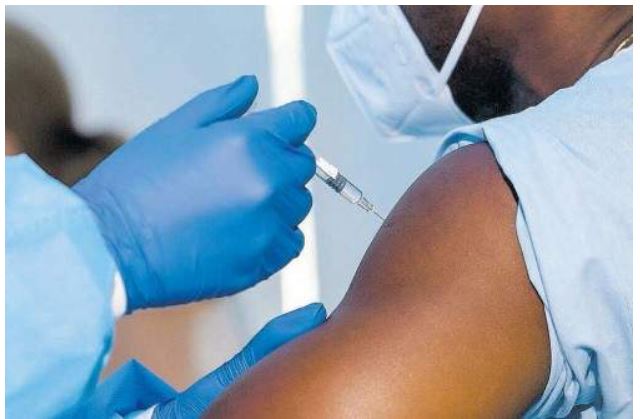By Eleanor Frederick, MSc, MPH
The elimination of AIDS as a public health threat by the year 2030 is the goal of the United Nations (UN) and the World Health Organization (WHO). To achieve this goal the UN and the WHO must ensure that 90 percent of all HIV positive individuals gain access to Antiretroviral Therapy (ART) by 2020 as part of the 90-90-90 initiative. The 90-90-90 initiative states 1: Increase percentage of people with HIV who know their diagnosis to 90%, 2: Increase the percentage of people receiving antiretroviral treatment to 90%, 3: Increase the percentage of people on treatment who have an undetectable (suppressed) viral load to 90%.
In an article published in the New England Journal of Medicine on October 26, 2017, Dr. Chris Beyrer, professor of epidemiology with the Johns Hopkins Bloomberg School of Public Health in Baltimore and colleagues stated “That will be “enormously difficult”. A team of experts warns ”that the global HIV pandemic continues and is at risk of expanding, given the worrisome global rise of HIV resistance to antiretroviral (ART) medications”. The WHO and experts from the U.S. Centers for Disease Control (CDC) agreed that the effectiveness of ART is increasingly at risk, with HIV drug resistance having increased from 11 percent in 2001 to 29 percent in 2017.
UNAIDS reports, since the start of the epidemic:
- 5 million people were accessing antiretroviral therapy in 2016, (which represent approximately half of the global population of HIV infected individuals).
- 7 million people globally were living with HIV in 2016.
- 8 million people became newly infected with HIV in 2016.
- 1 million people died from AIDS-related illnesses in 2016.
- 1 million people have become infected with HIV since the start of the epidemic.
- 0 million people have died from AIDS-related illnesses since the start of the epidemic.
2016 data from the AIDS Secretariat in the Ministry of Health indicates:
- 65 new infections
- 890 persons living with HIV
- 1165 persons infected since 1985
- 275 deaths from AIDS-related illnesses
- Antigua and Barbuda has recently been validated as having no mother to child transmission (MTCT) of HIV and Syphilis in the past five years
UNAIDS also states; “ART has grown to be one of the most effective tools in our arsenal of interventions to fight HIV – keeping people healthy and reducing the risk of onward transmission”. However, as countries begin to roll-out the latest WHO treatment guidelines that call for all people living with HIV to be on treatment, it has been noted that HIV drug resistance (HIVDR) has the potential to become a significant barrier to reaching the UNAIDS Fast-Track goal of ending AIDS by 2030.
WHO states that “HIVDR is a serious emerging threat to the global scale-up of HIV treatment access – particularly in sub-Saharan Africa and other low- and middle-income countries where weak health systems and poor access to monitoring and diagnostics make managing HIV more challenging”. Since July 2017, the WHO has recommended alternative treatment guidelines for countries with drug resistance prevalence at or above 10%.
The WHO further states the emergence of HIVDR has occurred due to multiple factors, including stock outs of drugs, poor health service quality and treatment interruptions. It limits HIV treatment options, increases treatment programme costs, and if left untreated, resistant virus can increase in the body to the extent that it can be transmitted.
What is HIV drug resistance: HIV drug resistance occurs when the virus starts to make changes (mutations) to its genetic make-up ribonucleic acid (RNA) that make it resistant to certain HIV drugs, or classes of HIV drugs. Drug resistance can happen either as a result of many years on HIV treatment, or more commonly, as a result of individuals not adherent to treatment. These new mutated viruses make copies of themselves; gradually increasing the level of the virus (viral load) in the person living with HIV therefore treatment may no longer be effective. Information from the AIDS Secretariat states that they are in the second month of a study to include 160 persons to determine the number of individuals who are experiencing drug resistance to ART.
Understanding viral mutations: After HIV first enters the body, it replicates at a very high rate, however, retroviruses such as HIV mutation rate is also high. Mutation is a permanent change to the genetic material of the virus, the mutation can be transmitted when the virus replicates. Sometimes the HIV mutations cause the virus to become resistant to some ART. ‘Wild type’ viruses – the naturally-occurring, non-mutated forms of the virus – are most susceptible to ART, but mutated forms of the virus may be less susceptible to ART. If the drug levels continue to be suboptimal, that is, ART is not high enough for the virus to stop replicating the viral load will increase.
Even when taking ART optimally, small populations of virus will still replicate. Over time, due to mutations, the population of viruses in an individual may contain fewer viral strains that are susceptible to HIV treatment, and more strains that are drug resistant. This is when viral load may become higher and detectable.
Depending on the viral mutations, it is possible for people to become resistant to a drug they have never taken – this is called ‘cross-resistance’. This is because some mutations affect the efficacy (effectiveness) of different drugs within the same drug class.
Beyrer states that individuals already infected but not yet treated should be given access to the latest types of ART “cocktails,” including drugs such as dolutegravir that have “higher genetic barriers to resistance”; which would be “likely to have a major impact on resistance levels in the countries which go this route.”
The survival rate for HIV infected patients who had access to Highly Active Antiretroviral Therapy (HAART) in the 1990s was remarkable. So why is the effectiveness of ART increasingly at risk and the global HIV pandemic continues and is at risk of expanding. Dr. Beyrer and colleagues noted that the problem is “shoddy adherence to ART regimens, mostly because of insufficient education and insufficient access to the medications. Poor adherence allows the HIV virus to mutate and develop drug resistance”.
To address the issue the research team advocates placing more focus on prevention by hastening the development of an effective vaccine and by ratcheting up the use of Truvada, the HIV prevention regimen also known as (Pre-Exposure Prophylaxis) PrEP. PrEP combines two ART drugs (tenofovir and emtricitabine), and the CDC says it can curtail HIV infection risk by as much as 90 percent.
It is important to have access to reliable laboratory testing for viral load and resistance testing as these are the best indicators of whether a particular medication is effective, i.e. suppressing the virus to undectable. The best time for these indicators to be recorded is before the start of ART right after a positive diagnosis as to have a base line. The individual and their healthcare provider can then tackle their treatment options to keep their viral load suppressed which will help prevent loss of treatment options in the future; as according to the AIDS Secretariat they only have first and second line therapy available.




